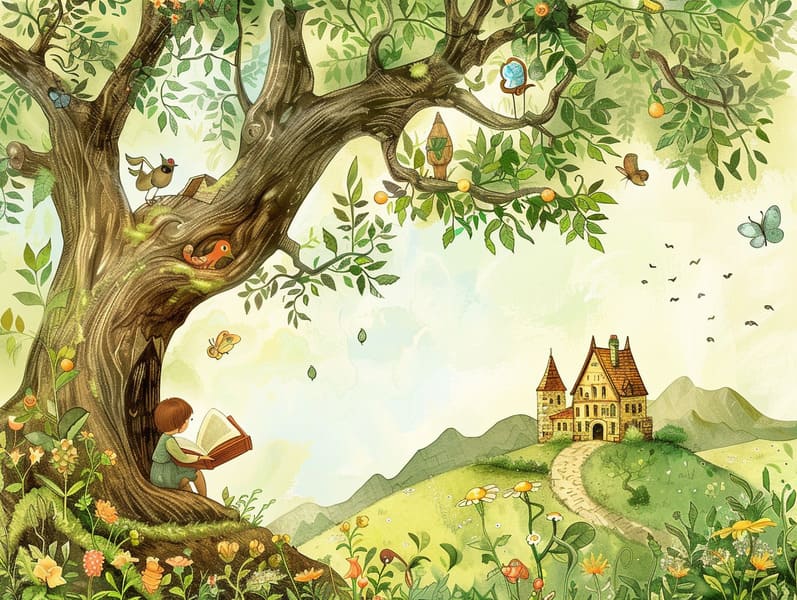Delving into the Background of Famous Fairy Tales with the Lasting Radiance.
Delving into the Background of Famous Fairy Tales with the Lasting Radiance.
Blog Article

Fairy tales for kids have timeless appeal. These tales have been transmitted from one generation to the next ages before they were ever published. They originated from a variety of backgrounds, including African traditions. They were initially passed along among elders, often carrying themes and messages mirroring the societal norms and beliefs of the time.
Jacob and Wilhelm Grimm, the two Grimm brothers, were among the first to collect many of these beloved stories. Their anthology, "Grimm's Fables," included narratives like "The Little Glass Slipper," "Little Brother and Little Sister," and "Schneewittchen," which have since become staples in the world of children's fairy tales. Similarly, the Danish author's charming tales, such as "The Mermaid," and "The Little Duckling," have touched hearts worldwide, guaranteeing their place in the pantheon of treasured fairy tales.
Despite their ancient origins, fairy tales remain as impactful as ever, especially as children's bedtime stories. These whimsical stories are now available in numerous formats, including colorful picture books, charming animations, and web-based fairy tales.
Their persistent charm can be traced to several charming aspects:
Valuable Lessons: Old fairy tales often convey important moral lessons. Tales like "The Shepherd Boy and the Wolf" teach the value of being truthful, while "The Story of the Tortoise and the Hare" demonstrate the values of perseverance and modesty. These narratives offer kids clear distinctions between virtue and vice, helping to shape their moral compass in a soft yet lasting way.
Empathy and Understanding: Old fairy tales frequently include individuals facing challenges and problems, stimulating young listeners to empathize with their struggles and rally behind their triumphs. For instance, "The Story of Beauty and the Beast" shows us the benefit of seeing inner beauty to realize the true nature of a being, enhancing insight and appreciation.
Cultural Comprehension: Many traditional fairy tales are deeply embedded in the cultural contexts from which they grew. Discovering these fairy tales can provide enlightening views into different traditions, nurturing a sense of international awareness and acknowledgment.
Fantasy and Imagination: The mythical elements in fairy tales—talking animals—enliven children’s imaginations. These tales carry readers to mythical realms, unleashing inventive thinking and a sense of fascination that persists a lifetime.
Ancient fairy tales are not only fantastical but also illuminating. They serve as bewitching tools in strengthening various cognitive and affective skills in kids. When ancient fairy tales are told out loud, they boost speech development by introducing new vocabulary and detailed sentence structures. This practice also promotes hearing abilities and mental focus, as young readers keep up with the story, anxious to see what happens next.
Furthermore, reflecting on the themes and characters of traditional fairy tales can develop cognitive skills and intellectual skills. Young ones learn to see patterns, anticipate outcomes, and grasp cause and effect. These reflections also ease kids reveal their thoughts and feelings, advancing their emotional intelligence.
In today’s digital age, the abundance of free fairy tales online has made these narratives more attainable than ever. Online platforms and mobile apps make available ample collections of ancient fairy tales that can be perused or listened on anytime, anywhere. Fairy tales spoken are particularly widespread, providing an immersive method for the young to be a part of these fantastical tales. Read-aloud stories and read-out-loud videos transport characters and settings to life, often enhanced by entrancing sound effects and melodies that enhance the narrative adventure.
The lasting appeal of timeless fairy tales lies in their ability to adjust to today's society while keeping hold of their key morals. Contemporary reimaginings of these fairy tales often show more multicultural protagonists and modern settings, making them pertinent to today’s audience. However, the central morals of heroism, goodness, and lawfulness remain unchanged, continuing to affect children of all ages.
Timeless fairy tales also offer a sense of warmth and understanding. They introduce a tidy narrative with a transparent beginning, middle, and end, often wrapping up with the finalization of conflicts and the triumph of morality over wickedness. This certainty can be placating for young readers, affording a sense of assuredness in an inconstant world.
Classic fairy tales continue to entrance and guide new generations, maintaining their splendor and value in modern society. As children's night stories, they deliver up a perfect blend of magic and knowledge, supporting moral values, empathy, and creativity. The proliferation of digital fairy tales and the widespread nature of fairy tales read out loud assure that these ancient stories remain within reach to new generations.
By retaining and relating these tales, we continue to celebrate the rich tapestry of storytelling and cultural heritage. Whether you are delving into a vividly illustrated book, exploring a web-based collection, or listening via an read-aloud book, the delight of Grimm's fairy tales is always within reach. These fairy tales point out of the undying spell of tales and its ability to join us across time and space.
Even if you are viewing a artistically illustrated book, browsing a online collection, or hearing an sound book, the elegance of classic fairy tales is always within reach.
These get more info fairy tales reveal of the perpetual impact of storytelling and its ability to bind us across generations and cultures, making a tie that fascinates and enlightens alike.